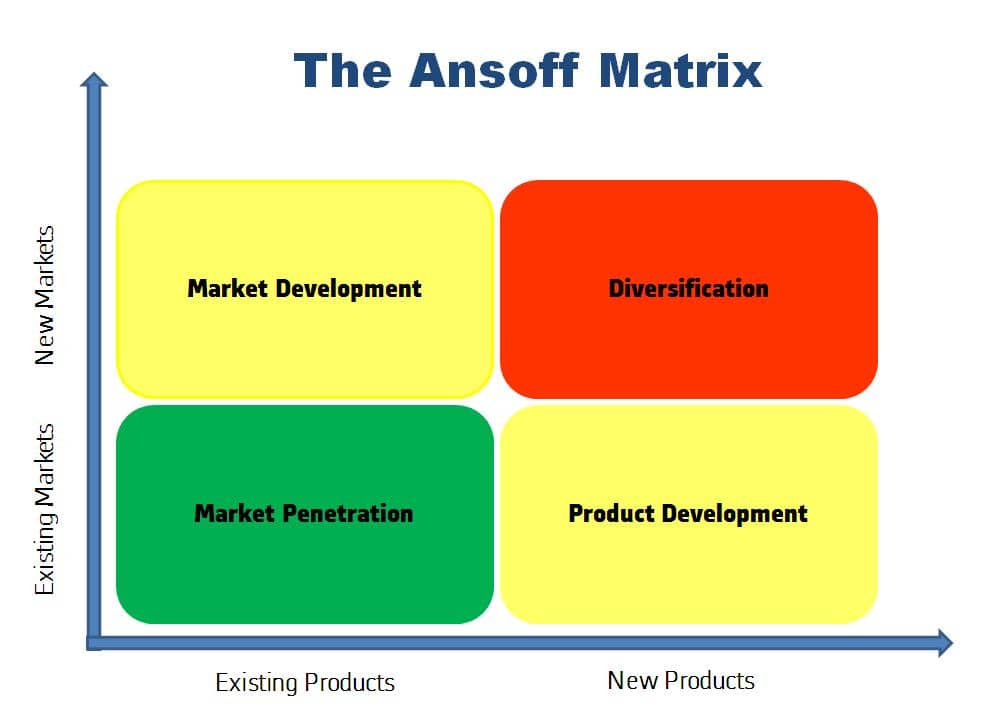When considering the future, and how you may grow as a business, the well-known and widely used Ansoff growth matrix will be useful to familiarise yourself with. This shows how growth can be achieved within four categories: existing markets with current products (market penetration), existing products in new markets (market development), existing markets with new products (product development), or new markets with new products (diversification). Let’s look at these categories now:

Market penetration
Simply put, market penetration consists of selling more of the same products in your existing market. This is about growing your existing markets and getting your current customers to consider more of your products and a wider diversity of your existing product range. It means creating new accounts in your existing market and devoting time, effort and your marketing spend to that market alone. It is the generally accepted ‘standard way’ to grow a business, and is the method with the least risk attached.
Market development
Market development consists of selling your existing products to new markets. New markets could be taking your products to a new demographic of buyers in the same country, or expanding geographically. With the world becoming a smaller place, many businesses are looking at market expansion and how they could export their products abroad. In my experience, this comes with a considerable marketing and sales cost, but is actually low risk in terms of not needing to develop new products or services.
Product development
We all have products and services that we need to market to our clients, but a way to grow your business is to develop new products or services and sell those to your existing market. This comes with the risk of product or service development, but if you can neatly diversify your offering and develop your services, the fact that you’ve got an existing client base can take some risk away from this approach—you already have a list of people who like what your company provides that you can try to sell to.
Diversification
In this final growth strategy, the plan is that you both develop new products or services, and sell them to an entirely new market. This is highly risky, given the double unknowns of how your new offerings will be taken and how the new markets will work, but if successful can lead to exponential growth.
Which growth strategy you adopt will depend on your attitude to risk; each of the four options has its own risk/reward level, and you must consider what is best for your particular company and market. However, there are also composite strategies which mean that you operate in multiple boxes at once—sometimes these are the best ways to mitigate risk. These can include:
– Strategic partnerships
– Joint ventures
– Company acquisition
– Franchising the businesses
– Developing new sales channels, i.e, the internet
- This is an excerpt from Warren’s book, Evolve to Succeed, which is available here.
